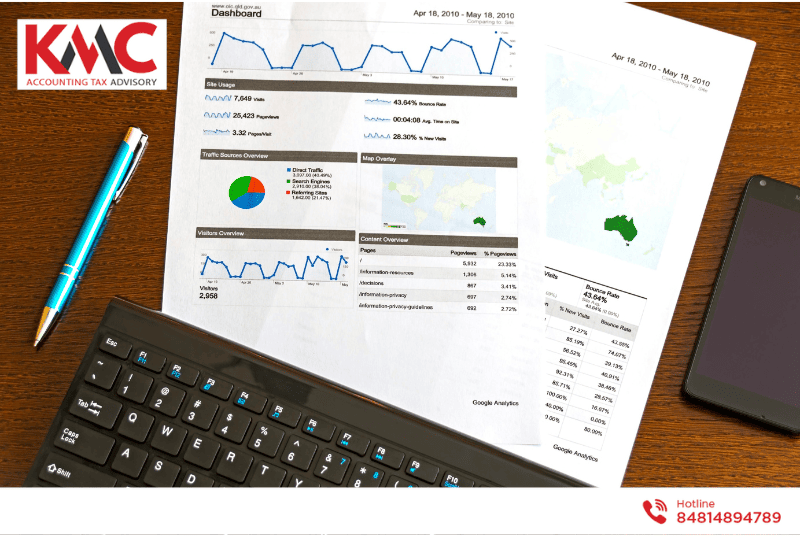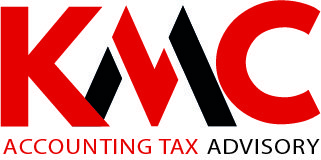The truth is that many HR professionals and executives see the employee performance evaluation process as a boring administrative “ritual.” This is precisely why they fail to develop employee competency development plans. In this article, KMC will help you build an effective employee performance evaluation process.
What is employee performance evaluation?

This is the process by which businesses monitor employees and measure the effectiveness of how they work. It’s not just about “scoring”; businesses also engage in conversations and provide positive feedback to work with employees on building development plans that suit them.
Why do businesses need an employee performance evaluation process?
Optimizing resources, reducing waste
An effective employee performance evaluation process helps businesses identify the strengths and weaknesses of each individual. From there, the company can allocate employees to positions that best suit their abilities to maximize strengths. This helps workers perform more effectively in their areas of expertise and avoids wasting time and effort on tasks they are not good at.
Supporting smart HR decisions
Performance evaluations not only serve as a basis for rewards but also help you identify potential employees and those who need additional support. Based on data from this process, you can make decisions such as promotions, transfers, additional training, or even personnel changes to align with long-term goals.
Building a culture of continuous improvement
A clear evaluation process encourages everyone to be self-aware about developing their expertise and gaining more experience to improve over time. As a result, the business continuously enhances operational efficiency and strengthens its position in the market.
7-step structured employee performance evaluation process
Step 1: Establish evaluation criteria

To evaluate employee performance, businesses need to set up a set of evaluation criteria for comparison, verification, and reference. Although criteria may vary between companies, you must ensure they are specific and easy to understand so that everyone can follow them.
In addition, these criteria should be measurable, so companies should use quantitative indicators (e.g., revenue and number of completed projects) or qualitative ones (e.g., communication skills and teamwork spirit). Finally, the criteria should be fair, aligned with existing resources, and not too far removed from reality. Notably, they should be collected from reliable sources such as work reports or feedback from colleagues/customers.
Example: Some criteria include achieving 80% of quarterly sales targets, submitting reports on time, and receiving at least 90% positive customer feedback.
Step 2: Communicate the criteria to employees

Before starting the evaluation period, the business must ensure that all employees clearly understand the company’s criteria and expectations. Therefore, you need to carry out step 2: communication.
The ideal time to communicate is either when hiring or at least 1–2 weeks before the evaluation so employees have time to prepare.
As for the communication method, businesses can hold team meetings, send detailed emails, or use the company’s internal platform to share. Don’t forget to explain why these criteria are important and how they relate to the organization’s goals.
Step 3: Continuously monitor performance

Employee performance needs to be regularly monitored throughout the evaluation cycle (monthly, quarterly, or annually) rather than just a few weeks before the evaluation. To achieve this, businesses need:
- Supporting tools such as performance management software: BambooHR, Workday, or work tracking sheets to record progress.
- Monthly or quarterly 1:1 meetings to update progress and help employees adjust in time.
- Recording positive results to boost morale instead of only focusing on weaknesses. For example, if an employee completes a project ahead of schedule, record it for future evaluation.
Step 4: Evaluate performance based on data
When the evaluation period arrives, there are two steps to compare the employee’s actual performance with the established criteria. First, ask employees to conduct a self-evaluation so they can present their perspectives. Then, the manager compares the data (reports, KPIs, feedback from colleagues) to make an objective assessment.
Step 5: Discuss results with employees
This is a necessary step for employees to understand the reasoning behind their evaluation results. Hold 1-on-1 meetings to discuss strengths and weaknesses constructively rather than criticizing. At the same time, listen to employees’ input to understand the difficulties they face and find ways to support them. This finesse helps you build trust and motivates employees to improve their performance.
Step 6: Propose development and improvement plans
Based on the evaluation results, the company and employee jointly build a personal development plan.
Typically, you can suggest courses, training sessions, or mentoring to improve skills. For example, an employee weak in negotiation skills can attend a sales training course. Besides knowledge and skills, businesses should also provide tools and allow more time for employees to achieve their goals.
If the initial goal is unfeasible, you can discuss and set new, more appropriate goals.
For instance, the company can support marketing staff by enrolling them in SEO courses or training them to use new data analysis software.
Step 7: Continuous monitoring and adjustment
Performance evaluation should not end after one cycle. Therefore, the company must continuously monitor and adjust the process to ensure flexibility and effectiveness.
Scheduling regular meetings and reviewing progress helps you identify areas that need improvement. If the company changes its strategy, adjust the evaluation criteria accordingly.
Common Performance Evaluation Methods and Their Practical Applications
Management by Objectives (MBO)
MBO focuses on setting specific, measurable goals that employees are given time to accomplish within a defined timeframe. For example, a manufacturing company may set a goal for the production manager to “reduce the product defect rate by 10% within 6 months.” Employees and managers agree on the goal, track progress, and evaluate results at the end of the period.
Advantages:
- Employees know exactly what they need to do, such as making 100 sales calls per week.
- Clear goals motivate employees to strive harder, especially in the competitive environment of FDI enterprises.
- This method is fair because performance is evaluated based on actual results, minimizing subjectivity.
Disadvantages:
- Setting goals and tracking progress takes a lot of time and requires close coordination between employees and managers.
- This method lacks flexibility. If the market changes—such as a drop in customer demand—the original goals may become unrealistic.
- It is not suitable for creative work. Positions like design and marketing require flexibility rather than fixed numerical targets.
MBO is suitable for positions with measurable outcomes such as sales and production.
360-Degree Evaluation
This method collects feedback from multiple sources: supervisors, peers, subordinates, and even customers or partners. For example, a customer service employee may receive high ratings from customers for attitude, while colleagues may comment on the need to improve teamwork skills.
Advantages:
- Provides a multi-dimensional perspective, helping employees clearly understand their strengths and weaknesses.
- Encourages communication and fosters a culture of open feedback, which is highly suitable for international environments such as FDI companies.
- Offers specific and detailed feedback, such as how to communicate with foreign partners.
Disadvantages:
- Gathering feedback from various sources requires a rigorous process and supporting tools, making it time-consuming.
- Some colleagues may give feedback based on personal feelings, which risks bias.
- Without proper management, a large volume of information from multiple sources can cause confusion and make data processing difficult.
This method is suitable for businesses aiming to improve employees’ soft skills, especially in managerial roles or positions that involve direct interaction with customers or partners.
Competency-Based Evaluation
This method involves assessing the skills, knowledge, and behaviors necessary for the job. For example, an accounting employee may be evaluated based on competencies such as “attention to detail” or “financial analysis ability.” Meanwhile, a technology engineer is evaluated on programming skills, problem-solving abilities, and teamwork attitude.
Advantages:
- Helps employees identify what they need to improve to meet job requirements.
- Based on clear criteria such as “negotiation skills.”
- Ensures that employees possess the right skills aligned with the company’s objectives, such as expanding into international markets.
Disadvantages:
- Identifying and measuring competencies requires significant time and resources.
- Some soft skills like leadership may be evaluated based on the manager’s personal perception.
- Skills like communication and creativity are often hard to quantify accurately.
This method is suitable for companies looking to invest in and develop their workforce in the long term, especially in positions that require high technical skills or operate in multicultural environments.
Detailed Guide to Conducting a Direct Performance Review Dialogue
Evaluations must be constructive. Unintentionally criticizing employees can escalate tensions and cause conflict. Below is a detailed guide on how to conduct the dialogue. It includes a sample script, how to deliver negative feedback constructively, and how to handle employees’ emotional responses.
Preparation Before the Conversation
- Review the data and use specific figures to ensure you evaluate objectively.
- Choose a quiet space for the conversation so that there are no interruptions.
- You don’t need to memorize your points, but you should identify key discussion topics in advance to ensure the conversation goes smoothly. Also, using open-ended questions can encourage employees to be more open and share more.
- Send a prior notice about the time and purpose of the conversation, and encourage the employee to self-assess their performance to help them prepare better.
Sample Script to Start the Conversation
Step 1: Greeting and building connection
“Hello [Employee’s Name], thank you for taking the time to join this conversation.”
Step 2: Stating the purpose of the conversation
“Today, we’ll discuss your work performance over the past period. The goal is to enhance your strengths, improve on weaknesses, and outline a plan for the upcoming phase. This is a two-way exchange, so please feel free to share. If you’re facing any difficulties, the company can consider ways to support you.”
“I’ve reviewed your work results and I’m really impressed with [mention a specific achievement], but I believe you still have the potential to do even better.”
Step 3: Encourage the employee to share first
“Before I give my feedback, would you like to share your thoughts on your recent work? What do you feel you’ve done well, and what do you think needs improvement?”
How to Give Constructive Negative Feedback
Negative feedback is the most sensitive part of the conversation. If not handled carefully, it can make the employee feel criticized. To avoid discouraging them, managers must focus on solutions rather than blame.
- Always start with something positive like the employee’s strengths or accomplishments. For example:
“I’m really impressed with your high sense of responsibility and how you took initiative to complete Project X on time.”
Or: “You’ve significantly improved your customer communication skills this past quarter, and that’s commendable.” - Then, present the negative feedback specifically and objectively by using neutral language, focusing only on specific behaviors and results, rather than judging the person.
For example, instead of saying “You’re not focused on work,” say:
“At times, I’ve noticed that you haven’t met deadlines, like the weekly report last week. Have you encountered any difficulties?” - Next, offer suggestions for improvement and encourage solutions.
For example:
“To improve your work efficiency, I think you could try breaking down tasks and setting specific deadlines. If needed, I can help you plan.” - Lastly, don’t forget to invite the employee to share their perspective so they feel heard.
For example:
“What do you think about my suggestion? Is there anything unclear?”
“If you have any different thoughts, please let me know.”
How to Handle Employees’ Emotional Reactions
When receiving feedback, especially negative feedback, some employees may feel angry, frustrated, or defensive. Therefore, managers must skillfully maintain a positive atmosphere to ensure the conversation remains effective. Below are ways to handle each type of reaction.
Defensive Reaction
Signs: The employee denies the issue, blames others, or gives justifications. For example: “I didn’t do anything wrong; it was the other team’s fault.”
How to handle:
- Listen and acknowledge their feelings: “I understand you feel this issue relates to another team. Could you tell me more specifically?”
- Reaffirm the constructive purpose: “I want us to look back at the issue together to find a way to improve.”
- Redirect toward solutions: “What do you think we can do to avoid this situation in the future?”
Angry Reaction
Signs: The employee speaks loudly, expresses dissatisfaction, or strongly disagrees. For instance: “Why am I always the one being criticized? I’ve tried really hard!”
How to handle:
- Stay calm and avoid emotional reactions: “It seems this feedback doesn’t feel right to you. Would you like to share more about your thoughts with me?”
- Pause if needed: “I see you’re quite upset. Maybe we should take a short break, okay?”
- Return to the issue: “I truly appreciate your efforts, and I want us to find a way for your hard work to be more fairly recognized. Let’s discuss this further.”
Disappointed Reaction
Signs: The employee is silent, appears sad, or shows a lack of motivation. Example: “I don’t think I can ever do anything right.”
How to handle:
● Show empathy: “Receiving negative feedback can be disappointing, but I’m here to support you in improving.”
● Reaffirm the employee’s strengths: “You’ve done very well in [specify the strengths]. I believe you can definitely overcome your weaknesses.”
● Offer a concrete support plan: “We can work together on a plan to improve [specific issue], such as taking a training course or working with an experienced colleague. What do you think?”
Ending the Conversation
Summarize key points: “Today we’ve discussed [summarize key points: achievements, areas for improvement, action plan]. I really appreciate your openness.”
Agree on an action plan: “We’ve agreed that you will [specify the action, e.g., attend a training course, improve communication skills]. I’ll support you by [specify the support].”
Encourage two-way feedback: “If you have any thoughts or need further support, please feel free to let me know anytime.”
Positive closing: “I truly believe in your potential and look forward to seeing your continued growth moving forward.”
Building an effective employee performance evaluation process requires not only employee cooperation and leadership commitment but also strong managerial skills and the right support system. If you need HR consulting support, you can contact KMC via hotline +84814894789.

